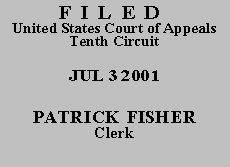

| UNITED STATES OF AMERICA,
Plaintiff-Appellee, v. FELIPE GUTIERREZ-HERNANDEZ, also known as David Gutierrez-Hernandez, Defendant-Appellant. |
|
Appellant Felipe Gutierrez-Hernandez was convicted of illegal reentry after deportation, in violation of 8 U.S.C. § 1326. Because appellant had previously been convicted of an aggravated felony, the district court determined the maximum sentence under the statute to be twenty years' imprisonment rather than two-years' imprisonment. See 8 U.S.C. §§ 1101(a)(43), 1326(b)(2). After appellant was given credit for acceptance of responsibility, the court determined the guideline sentencing range to be seventy to eighty-seven months' imprisonment. The district court denied appellant's request for a downward departure and sentenced him to seventy months' imprisonment.
Appellant originally filed this appeal to challenge the district court's discretionary decision to deny a downward departure from the guideline sentencing range. After conceding that this court lacks jurisdiction to consider that issue, see United States v. Castillo, 140 F.3d 874, 887 (10th Cir. 1998), appellant filed an amended docketing statement to raise two new arguments. First, he contends that his sentence improperly exceeds the statutory two-year maximum under § 1326(a) because the government did not allege his prior aggravated felony conviction in the indictment. Second, he asserts that his seventy-month sentence is excessive and disproportionate to the crime and therefore violates the Fifth and Eighth Amendments.
The Supreme Court has held that an illegal alien's prior aggravated felony conviction is a sentencing factor rather than an element of 8 U.S.C. § 1326, and it need not be alleged in the indictment. Almendarez-Torres v. United States, 523 U.S. 224, 228-35 (1998). The Court expressly declined to revisit or overrule Almendarez-Torres in Apprendi v. New Jersey, 530 U.S. 466 (2000). United States v. Martinez-Villalva, 232 F.3d 1329, 1331 (10th Cir. 2000). Therefore, we are still bound by Almendarez-Torres and appellant's first argument is without merit.
Appellant also argues that his sentence is disproportionate to his crime. The Eighth Amendment prohibits a sentence that is disproportionate to the crime. Hawkins v. Hargett, 200 F.3d 1279, 1281-82 (10th Cir. 1999) (reviewing Supreme Court jurisprudence on proportionality), cert. denied, 121 S. Ct. 83 (2000). However, "'successful challenges to the proportionality of particular sentences should be exceedingly rare.'" Id. at 1281 (quoting Rummel v. Estelle, 445 U.S. 263, 272 (1980)). We make a threshold comparison of the crime committed and the sentence imposed to determine if the sentence is grossly disproportionate. Id. at 1282 (discussing Harmelin v. Michigan, 501 U.S. 957 (1991)). If it is not, then we do not consider how appellant's sentence compares to sentences imposed for other crimes in the same jurisdiction, or to sentences imposed by other jurisdictions for the same crime. Id. at 1281-82.
Further, "[w]e must 'grant substantial deference to the broad authority that legislatures necessarily possess in determining the types and limits of punishments for crimes, as well as to the discretion that trial courts possess in sentencing convicted criminals.'" United States v. Jones, 213 F.3d 1253, 1262 (10th Cir. 2000) (quoting Solem v. Helm, 463 U.S. 277, 290 (1983)). Under this standard, we do not find appellant's sentence to be grossly disproportionate for the crime charged under 8 U.S.C. § 1326. His seventy-month sentence was well below the statutory maximum and was the minimum sentence within the applicable guideline range.
AFFIRMED.
Entered for the Court
Chief Judge
*. This order and judgment is not binding precedent, except under the doctrines of law of the case, res judicata, and collateral estoppel. The court generally disfavors the citation of orders and judgments; nevertheless, an order and judgment may be cited under the terms and conditions of 10th Cir. R. 36.3.